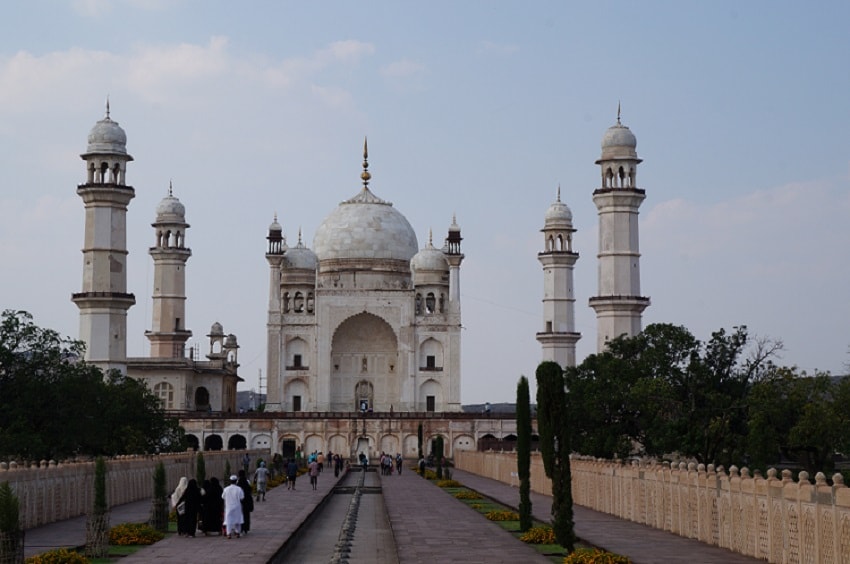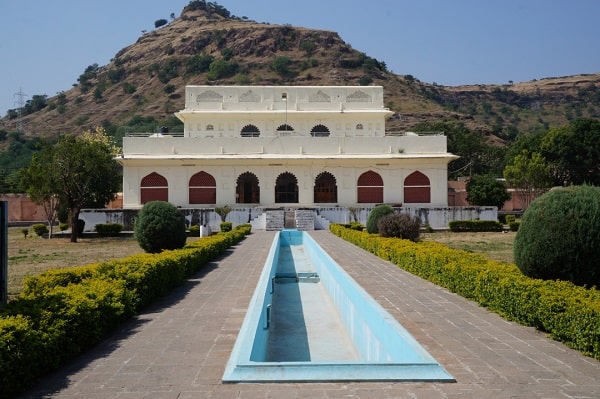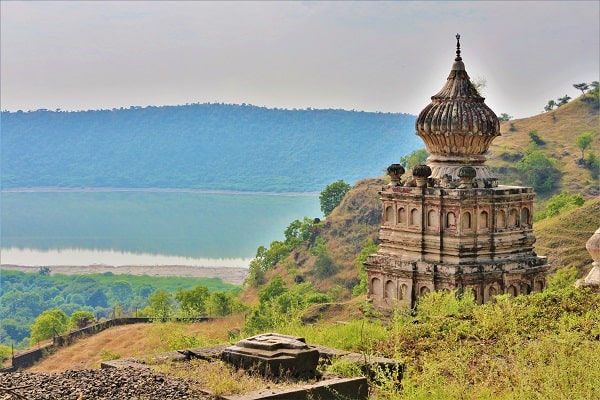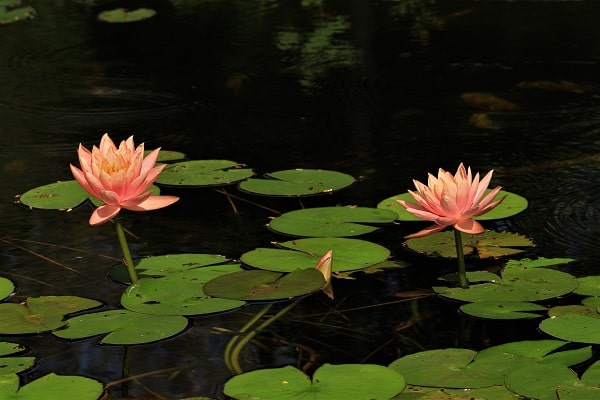The Mughal Empire was the powerful Empire that dominated North India from 1526 until the middle of the 18th century. They have left with many beautiful monuments, the best known is the Taj Mahal. Because Aurangabad was the capital of the Mughal empire under Aurangzeb, it also has a fine example of Mughal architecture, the Bibi ka Maqbara.
History of Bibi ka Maqbara, the mini Taj Mahal (Taj of Deccan)
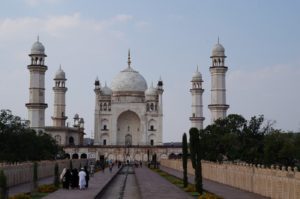
Inspiration from Agra
The legend Aurangzeb who was governor of Deccan, secretly traveled to Agra to see his sister. Upon arriving, he was impressed by the beauty of the Taj Mahal while it was under construction. Back in Aurangabad, he wanted to show his imperial ambition so he started the construction of the similar monument.
The history of the monument
Initially, it was not meant to be a mausoleum. It was built between 1651 and 1661. But in 1657, when Rabia Ul Durrani, Aurangzeb’s first wife gave birth to her fifth child, she died as a result of this delivery. It was at this time that the monument became a mausoleum.
The Controversy of Taj of Deccan
When you visit the monument, you will see a the explanatory plaque at the entrance and you will also see description that the monument was built by Azam Shah, the son of Aurangzeb. The concern is that Azam Shah was born in 1653, two years after the start of construction of the Mini Taj. It is the work of Aurangzeb for his beloved wife. But as this one is the most hated character in India, we guess no one want to put his name on the plaque at the entrance to the monument.
Why do we call the Bibi ka Maqbara, the mini Taj?
It’s resemblance to the Taj Mahal of Agra (1631-1653) gave it the name of Taj of Deccan or mini Taj Mahal. It is true that if you look at it, you could be confused between the two monuments. The Bibi ka Maqbara still has differences from the Agra monument. The Taj Mahal being the monument which marks the apogee of the Mughal architecture in India, it is normal that it is inspired the architects thereafter.
Despite everything, the Bibi ka Maqbara remains the most beautiful example of Mughal architecture in the Deccan region. It has gardens that have accompanied the Mughal Empire from the start.
The Mughal gardens
Various influences
The Mughal gardens were influenced by the Persian gardens. The design of the Mughal gardens stems mainly from the medieval Islamic garden, although there are influences from the Turkish-Mongolian ancestry of the Mughals. It can be identified by its very important use of straight lines in a walled enclosure. Typical layouts associated with Mughal gardens are ponds, fountains and canals.
An art that has accompanied the empire from the start
Since the beginnings of the Mughal empire, creating gardens has been one of the favorite pastimes of emperors. Babur, the founder of the empire built gardens in Lahore and Dhopur. Even though Humayun did not have much time to build gardens, he is known to have spent much time in his father’s place. Jahangir, Humayun’s grandson is known for his love for flowers.
His son Shah Jahan marked the height of the Mughal gardens, including the construction of the Taj Mahal and the Red Fort in Delhi which contains the Mahtab Bagh, a night garden that was filled with flowers which shines at night, like jasmine. Even at the decline of the empire didn’t reduce the presence of the garden. Azam Shah built a beautiful garden for his wife’s mausoleum in Khuldabad.
Characteristics of the Mughal gardens
It’s essential characteristics include water circuits and a basin like a big water tank to reflect the beauties of the sky and the garden, trees of different species, some to provide shade and others to give fruits, colorful and fragrant flowers , birds to give charms to the gardens. Peacock is one of the favourite bird of Mughals.
The important factors in the center of the gardens
For the Mughals, the 5 things must be there in a garden. The symmetry and the different monuments which touch the view of visitors. For hearing beautiful sounds, they keep birds as well as water fountains to have the feel/sound of river. The smell is captured by the different flowers. The presence of fruit trees allows the taste to be aroused.
The importance of numerology
The number eight and nine were considered auspicious by the Mughals and may in fact be found in the number of terraces or the architecture of gardens, such as the use of the octagon. The Bibi ka Maqbara garden contains eight platforms in the garden and the minarets are octagonal in shape. We let you discover the other references to figure out number 8
Mughal architecture
Symmetry as the norm
Symmetry is one of the main fact of Mughal architecture. This one is present in the garden as on the main monument. The mosque on the left and symmetrical to the pavilion on the right. Even the front door regains its symmetry with the pavilions at the bottom of the garden. The mausoleum is on a platform accessible by two symmetrical staircases.
Unfortunately, this symmetry was broken by the construction of a mosque. It was built by the Nizam of Hyderabad between the 18th and 19th centuries. It is fully arched and could accommodate up to 377 people. The materials used to build are basalt and plaster, the bottom part is marble. We have no information on the reason for the construction of a mosque there, since the site already has two mosques in the east and west.
The Bibi ka Maqbara has a different history from the Taj Mahal
Aurangzeb was the last of the 6 great Mughal emperors. Son of Shah Jahan, the builder of the Taj Mahal. He was not destined to rule as the third boy. The mausoleum was built when in Agra the Taj Mahal was finished. The biggest difference between this one and the Bibi Ka Maqbara is the materials used. In Taj of Agra, only marble was used and the Taj of Deccan is essentially made of plaster and bottom is of Marble. That is why it is made in less price than Taj Mahal. It is not just a simple detail but the sign of the declination of the empire. Indeed, with Aurangzeb the empire reached its territorial apogee and after him, no emperor was able to restore its grandeur to the empire.
The mausoleum is called the Bibi ka Maqbara. Bibi means wife and Maqbara means grave. It is made up at its base of marble and the rest is plaster. Inside the mausoleum, you can see octagonal shape. You can admire the tomb from above and the devotees throw money on tomb to make a wish. The grave is covered with a green cloth, the color of Islam. The building is decorated with Islamic type windows that allow you to see outside without being seen.
Today the Bibi ka Maqbara, the Taj of Deccan remains the living testimony of a lost art, that is of the Mughals and it has become the symbol of Aurangabad. If you want to discover this treasure, the history of India, you can look at the different tours that we offer.

